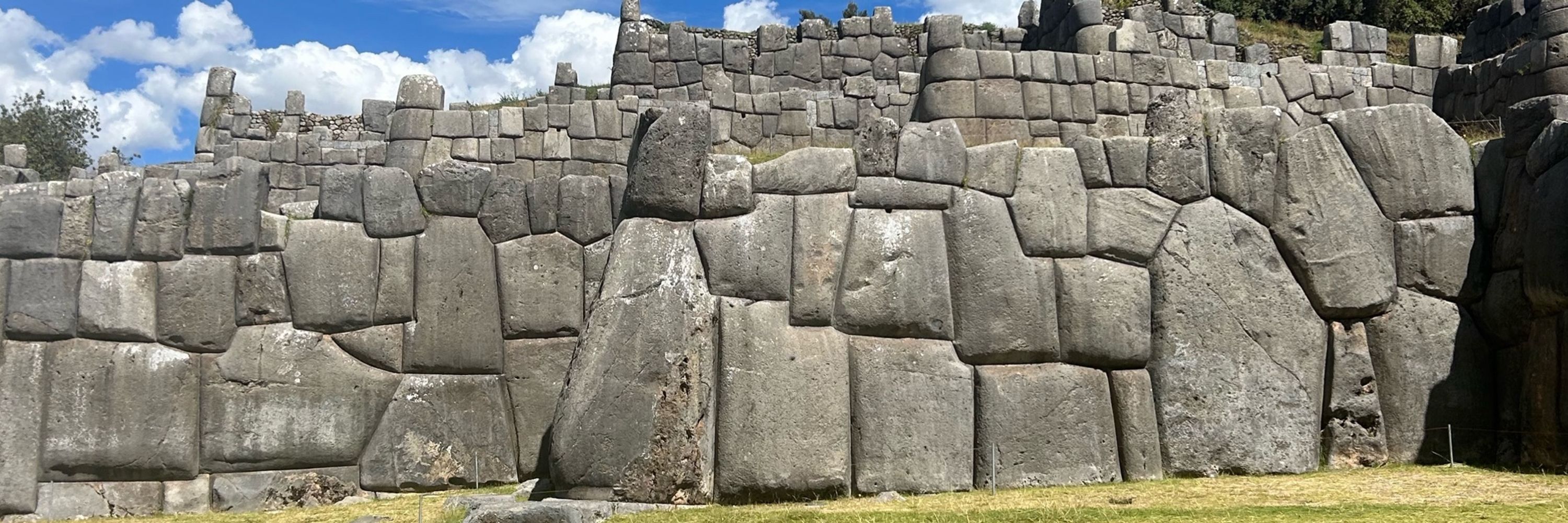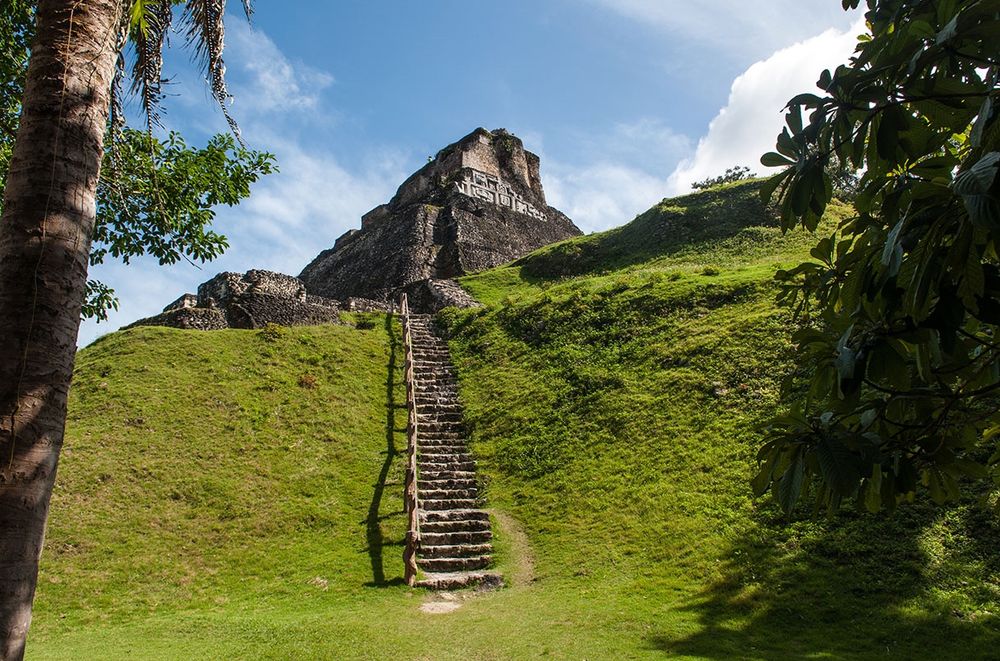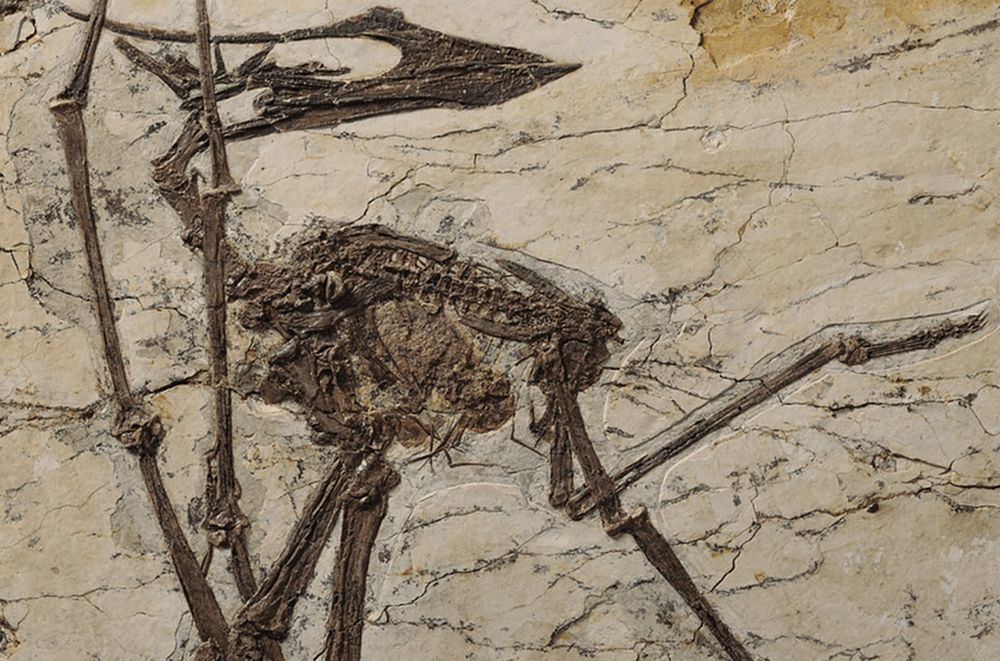
Taylor Mitchell Brown
@tmitchellbrown.bsky.social
Science journalist covering archaeology, paleontology, and Earth science | Words for Science, New Scientist, Science News, and Live Science 🧪🏺
Pinned

Funding cuts to U.S. archaeology could imperil field’s future
A Science analysis of canceled and curtailed federal grants reveals hits to research, collections, and training
www.science.org
I spoke with several leading archaeologists to better understand the impact recent federal funding cuts will have on archaeology in the US. The future doesn’t look good.
#NSF #NEH #archaeology #paleoanthropology #heritage
New at @science.org 🏺🧪
#NSF #NEH #archaeology #paleoanthropology #heritage
New at @science.org 🏺🧪
McGraths Flat is an incredible fossil site in New South Wales that reveals Australia’s rich tropical past.
In a new study, scientists discover what caused the area’s exceptional fossilization—and where similar fossil sites might be unearthed.
#Paleontology #Lagerstatte
🧪🏺
New for @science.org
In a new study, scientists discover what caused the area’s exceptional fossilization—and where similar fossil sites might be unearthed.
#Paleontology #Lagerstatte
🧪🏺
New for @science.org

Australia’s red rocks hold mysteriously detailed fossils. We finally know how they formed
Chemical analysis could help predict locations of other ancient sites with impeccable fossils
www.science.org
November 4, 2025 at 7:02 PM
McGraths Flat is an incredible fossil site in New South Wales that reveals Australia’s rich tropical past.
In a new study, scientists discover what caused the area’s exceptional fossilization—and where similar fossil sites might be unearthed.
#Paleontology #Lagerstatte
🧪🏺
New for @science.org
In a new study, scientists discover what caused the area’s exceptional fossilization—and where similar fossil sites might be unearthed.
#Paleontology #Lagerstatte
🧪🏺
New for @science.org
Scientists are turning to tree rings from ancient coffins to glean novel insights into our past.
Beyond withered corpses and grave goods, the buried woods reveal unparalleled details about historic temperatures, droughts, and floods.
#Dendrochronology #Paleoclimatology
New at @science.org 🧪🏺
Beyond withered corpses and grave goods, the buried woods reveal unparalleled details about historic temperatures, droughts, and floods.
#Dendrochronology #Paleoclimatology
New at @science.org 🧪🏺

Tree rings from ancient coffins offer clues to Earth’s past
Wood from gravesites can help reconstruct historic temperatures, floods, and droughts
www.science.org
October 30, 2025 at 7:31 PM
Scientists are turning to tree rings from ancient coffins to glean novel insights into our past.
Beyond withered corpses and grave goods, the buried woods reveal unparalleled details about historic temperatures, droughts, and floods.
#Dendrochronology #Paleoclimatology
New at @science.org 🧪🏺
Beyond withered corpses and grave goods, the buried woods reveal unparalleled details about historic temperatures, droughts, and floods.
#Dendrochronology #Paleoclimatology
New at @science.org 🧪🏺
Reposted by Taylor Mitchell Brown
Science Bluesky has the juice. 🧃🧪
As a science journo, I’d say an easy step many scientists could take is to simply share their papers and key findings on social media. It’s amazing how many cool projects I’ve discovered just by following researchers here on Bluesky.
October 22, 2025 at 7:05 PM
Science Bluesky has the juice. 🧃🧪
Reposted by Taylor Mitchell Brown
Mushrooms from the genus Psilocybe can provoke psychedelic experiences thanks to compounds including psilocybin.
A new study finds that within another genus of “magic” mushrooms, psilocybin is synthesized using a completely different chemical pathway. https://scim.ag/47hEBv1
A new study finds that within another genus of “magic” mushrooms, psilocybin is synthesized using a completely different chemical pathway. https://scim.ag/47hEBv1

In mind-bending twist, ‘magic’ mushrooms evolved twice independently
Study identifies entirely new suite of enzymes that can make psilocybin
www.science.org
October 14, 2025 at 1:30 PM
Mushrooms from the genus Psilocybe can provoke psychedelic experiences thanks to compounds including psilocybin.
A new study finds that within another genus of “magic” mushrooms, psilocybin is synthesized using a completely different chemical pathway. https://scim.ag/47hEBv1
A new study finds that within another genus of “magic” mushrooms, psilocybin is synthesized using a completely different chemical pathway. https://scim.ag/47hEBv1
An analysis of over 5,000 fossils found dung beetles developed a taste for fetid meat significantly earlier than previously believed.
The 37-million-year-old discovery suggests fierce fecal competition drove some species to start eating flesh.
#Paleontology #FossilFriday
🧪🏺
New for @science.org
The 37-million-year-old discovery suggests fierce fecal competition drove some species to start eating flesh.
#Paleontology #FossilFriday
🧪🏺
New for @science.org

How poop-eating beetles evolved to eat rotting flesh
Analysis of thousands of fossils pushes back change in beetles’ diets by more than 37 million years
www.science.org
October 17, 2025 at 10:28 PM
An analysis of over 5,000 fossils found dung beetles developed a taste for fetid meat significantly earlier than previously believed.
The 37-million-year-old discovery suggests fierce fecal competition drove some species to start eating flesh.
#Paleontology #FossilFriday
🧪🏺
New for @science.org
The 37-million-year-old discovery suggests fierce fecal competition drove some species to start eating flesh.
#Paleontology #FossilFriday
🧪🏺
New for @science.org
Scientists just found several fossil bumblebees covered in pollen that directly matches fossil flowers nearby.
The 24-million-year-old discovery reveals the oldest known evidence connecting pollinators to the pollinated.
#Paleontology #NationalFossilDay
🧪🏺
New at @sciencenews.bsky.social
The 24-million-year-old discovery reveals the oldest known evidence connecting pollinators to the pollinated.
#Paleontology #NationalFossilDay
🧪🏺
New at @sciencenews.bsky.social

These ancient bumblebees were found with their pollen source
Insects have long pollinated plants, but evidence of ancient pairing is rare. Fossils now show bees and linden trees goes back 24 million years.
www.sciencenews.org
October 15, 2025 at 6:22 PM
Scientists just found several fossil bumblebees covered in pollen that directly matches fossil flowers nearby.
The 24-million-year-old discovery reveals the oldest known evidence connecting pollinators to the pollinated.
#Paleontology #NationalFossilDay
🧪🏺
New at @sciencenews.bsky.social
The 24-million-year-old discovery reveals the oldest known evidence connecting pollinators to the pollinated.
#Paleontology #NationalFossilDay
🧪🏺
New at @sciencenews.bsky.social
Reposted by Taylor Mitchell Brown
About 120 million years ago, a pterosaur fell from the sky and died in a pond. A layer of sediment washed over it, preserving not only its skeleton, but also its stomach.
The resulting fossil is the first pterosaur ever found with a belly full of plants. #NationalFossilDay https://scim.ag/4hbaedc
The resulting fossil is the first pterosaur ever found with a belly full of plants. #NationalFossilDay https://scim.ag/4hbaedc

October 15, 2025 at 4:51 PM
About 120 million years ago, a pterosaur fell from the sky and died in a pond. A layer of sediment washed over it, preserving not only its skeleton, but also its stomach.
The resulting fossil is the first pterosaur ever found with a belly full of plants. #NationalFossilDay https://scim.ag/4hbaedc
The resulting fossil is the first pterosaur ever found with a belly full of plants. #NationalFossilDay https://scim.ag/4hbaedc
Reposted by Taylor Mitchell Brown
ok this is fucking awesome
Scientists recently found two evolutionarily distinct mushrooms converged to produce the same psychedelic molecule—psilocybin.
The “surprising” results underscore the significance of the hallucinogen but leave questions about its ultimate purpose.
#Psilocybe #MagicMushrooms
New at @science.org 🧪🏺
The “surprising” results underscore the significance of the hallucinogen but leave questions about its ultimate purpose.
#Psilocybe #MagicMushrooms
New at @science.org 🧪🏺

In mind-bending twist, ‘magic’ mushrooms evolved twice independently
Study identifies entirely new suite of enzymes that can make psilocybin
www.science.org
October 9, 2025 at 7:02 PM
ok this is fucking awesome
Scientists recently found two evolutionarily distinct mushrooms converged to produce the same psychedelic molecule—psilocybin.
The “surprising” results underscore the significance of the hallucinogen but leave questions about its ultimate purpose.
#Psilocybe #MagicMushrooms
New at @science.org 🧪🏺
The “surprising” results underscore the significance of the hallucinogen but leave questions about its ultimate purpose.
#Psilocybe #MagicMushrooms
New at @science.org 🧪🏺

In mind-bending twist, ‘magic’ mushrooms evolved twice independently
Study identifies entirely new suite of enzymes that can make psilocybin
www.science.org
October 9, 2025 at 6:22 PM
Scientists recently found two evolutionarily distinct mushrooms converged to produce the same psychedelic molecule—psilocybin.
The “surprising” results underscore the significance of the hallucinogen but leave questions about its ultimate purpose.
#Psilocybe #MagicMushrooms
New at @science.org 🧪🏺
The “surprising” results underscore the significance of the hallucinogen but leave questions about its ultimate purpose.
#Psilocybe #MagicMushrooms
New at @science.org 🧪🏺
Reposted by Taylor Mitchell Brown
Hunter-gatherers may have used engravings to find water in the parched deserts of the Arabian Peninsula 12,000 years ago. https://scim.ag/4nql413

Prehistoric camel art pointed to precious water sources in the Arabian Desert
Hunter-gatherers may have used the engravings to find water 12,000 years ago
scim.ag
October 1, 2025 at 10:30 PM
Hunter-gatherers may have used engravings to find water in the parched deserts of the Arabian Peninsula 12,000 years ago. https://scim.ag/4nql413
Large stone fragment of a monumental building at Eleusis, Greece. The Ancient Greeks hosted a festival here every September to celebrate the return of Persephone to her mother Demeter, goddess of agriculture.
🧪🏺
The festival lasted until 395 CE.
📷: me
#AncientGreece #EleusinianMysteries
🧪🏺
The festival lasted until 395 CE.
📷: me
#AncientGreece #EleusinianMysteries

September 30, 2025 at 6:45 PM
Large stone fragment of a monumental building at Eleusis, Greece. The Ancient Greeks hosted a festival here every September to celebrate the return of Persephone to her mother Demeter, goddess of agriculture.
🧪🏺
The festival lasted until 395 CE.
📷: me
#AncientGreece #EleusinianMysteries
🧪🏺
The festival lasted until 395 CE.
📷: me
#AncientGreece #EleusinianMysteries
New research finds that 12,000-year-old camel art in Saudi Arabia’s Nefud Desert once marked ancient water sources.
Hunter-gatherers may have used the ephemeral water bodies to penetrate deeper into the barren landscape.
#RockArt #Archaeology
New for @science.org 🧪🏺
Hunter-gatherers may have used the ephemeral water bodies to penetrate deeper into the barren landscape.
#RockArt #Archaeology
New for @science.org 🧪🏺

Prehistoric camel art pointed to precious water sources in the Arabian Desert
Hunter-gatherers may have used the engravings to find water 12,000 years ago
www.science.org
September 30, 2025 at 3:26 PM
New research finds that 12,000-year-old camel art in Saudi Arabia’s Nefud Desert once marked ancient water sources.
Hunter-gatherers may have used the ephemeral water bodies to penetrate deeper into the barren landscape.
#RockArt #Archaeology
New for @science.org 🧪🏺
Hunter-gatherers may have used the ephemeral water bodies to penetrate deeper into the barren landscape.
#RockArt #Archaeology
New for @science.org 🧪🏺
An exquisite fossil of a 240-million-year-old marine reptile reveals it had partially webbed fingers and toes.
The exceptional preservation also hinted at underlying limb muscles that suggest it swam like seal.
#Paleontology #MonteSanGiorgio
🧪🏺
New for @sciencenews.bsky.social
The exceptional preservation also hinted at underlying limb muscles that suggest it swam like seal.
#Paleontology #MonteSanGiorgio
🧪🏺
New for @sciencenews.bsky.social

An ancient reptile’s fossilized skin reveals how it swam like a seal
A reptile fossil is the first of its kind with skin and partially webbed feet, possibly showing how later species like plesiosaurs adapted to water.
www.sciencenews.org
September 24, 2025 at 3:29 PM
An exquisite fossil of a 240-million-year-old marine reptile reveals it had partially webbed fingers and toes.
The exceptional preservation also hinted at underlying limb muscles that suggest it swam like seal.
#Paleontology #MonteSanGiorgio
🧪🏺
New for @sciencenews.bsky.social
The exceptional preservation also hinted at underlying limb muscles that suggest it swam like seal.
#Paleontology #MonteSanGiorgio
🧪🏺
New for @sciencenews.bsky.social
Reposted by Taylor Mitchell Brown
A carved figure found in northern France, dated to 27,000 years ago, may reflect how hair was styled in a culture that disappeared during the last glacial maximum

Does this sculpted head show an ancient hunter-gatherer's hairstyle?
A carved figure found in northern France, dated to 27,000 years ago, may reflect how hair was styled in a culture that disappeared during the last glacial maximum
www.newscientist.com
September 9, 2025 at 7:26 PM
A carved figure found in northern France, dated to 27,000 years ago, may reflect how hair was styled in a culture that disappeared during the last glacial maximum
Reposted by Taylor Mitchell Brown
Four new fossil species from New Zealand illustrate the striking diversity of the earliest penguins, which possessed long dagger-like beaks they may have used to skewer prey.

Early penguins may have used dagger-like beaks to skewer prey
Four new species of aquatic birds related to modern penguins have been described from fossils found in New Zealand, showing how these creatures flourished around 60 million years ago
www.newscientist.com
September 4, 2025 at 1:11 PM
Four new fossil species from New Zealand illustrate the striking diversity of the earliest penguins, which possessed long dagger-like beaks they may have used to skewer prey.
Scientists uncovered several extreme droughts that helped undermine the authority of “divine kings” and trigger widespread collapse across the Maya world. One 13-year drought is the longest recorded in Yucatán history over the past 2,000 years.
#Archaeology #Paleoclimatology
New at @science.org 🧪🏺
#Archaeology #Paleoclimatology
New at @science.org 🧪🏺

Stalagmites reveal devastating droughts that helped spur Maya breakdown
Series of droughts chronicled in cave rocks likely pushed civilization to breaking point
www.science.org
August 29, 2025 at 6:46 PM
Scientists uncovered several extreme droughts that helped undermine the authority of “divine kings” and trigger widespread collapse across the Maya world. One 13-year drought is the longest recorded in Yucatán history over the past 2,000 years.
#Archaeology #Paleoclimatology
New at @science.org 🧪🏺
#Archaeology #Paleoclimatology
New at @science.org 🧪🏺
Move over Tiktaalik, a new semi-terrestrial fish just dropped.
#Devonian #TraceFossils #Paleontology
New at @science.org 🏺🧪
#Devonian #TraceFossils #Paleontology
New at @science.org 🏺🧪

Fossilized fish trails reveal earliest steps out of water
Possible lungfish tracks could push back animal migration onto land by 10 million years
www.science.org
August 15, 2025 at 10:31 PM
Move over Tiktaalik, a new semi-terrestrial fish just dropped.
#Devonian #TraceFossils #Paleontology
New at @science.org 🏺🧪
#Devonian #TraceFossils #Paleontology
New at @science.org 🏺🧪
Reposted by Taylor Mitchell Brown
“This is a once-in-a-hundred-years discovery.” scim.ag/4lPz3MX

July 19, 2025 at 2:07 PM
“This is a once-in-a-hundred-years discovery.” scim.ag/4lPz3MX
Reposted by Taylor Mitchell Brown
Submerged fossils are revealing long-held secrets from a region known as Sundaland. scim.ag/3TRZRQG

Ancient human ancestor emerges from sunken Southeast Asian landmass
Submerged fossils are revealing long-held secrets from a region known as Sundaland
scim.ag
July 24, 2025 at 3:29 PM
Submerged fossils are revealing long-held secrets from a region known as Sundaland. scim.ag/3TRZRQG
Ancient Romans had a strong fascination with fossils, often viewing them as protective talismans. Archaeologists just unearthed the first trilobite fossil linked to the Roman world—and it was likely worn as jewelry.
#Archaeology #AncientHistory #RomanHistory
New at @science.org 🧪🏺
#Archaeology #AncientHistory #RomanHistory
New at @science.org 🧪🏺

This trilobite fossil became ancient Roman bling
It’s the first example of this common fossil found in the ancient Roman world
www.science.org
July 24, 2025 at 10:00 PM
Ancient Romans had a strong fascination with fossils, often viewing them as protective talismans. Archaeologists just unearthed the first trilobite fossil linked to the Roman world—and it was likely worn as jewelry.
#Archaeology #AncientHistory #RomanHistory
New at @science.org 🧪🏺
#Archaeology #AncientHistory #RomanHistory
New at @science.org 🧪🏺
Reposted by Taylor Mitchell Brown
A new species of Velociraptor-like dinosaur from the Gobi Desert in Mongolia had giant claws and exceptionally thickset hands, which may have enabled it to take down larger prey.

Small, stocky dinosaur related to Velociraptor named as new species
Shri rapax, known from a fossil found in Mongolia, had strong hands and teeth which may have helped it tackle much larger dinosaurs
www.newscientist.com
July 22, 2025 at 12:28 PM
A new species of Velociraptor-like dinosaur from the Gobi Desert in Mongolia had giant claws and exceptionally thickset hands, which may have enabled it to take down larger prey.
Reposted by Taylor Mitchell Brown
A Roman mosaic panel stolen from Pompeii by a German Nazi captain during the second world war has been returned to the site of the ancient Roman ruins.

Erotic mosaic stolen by Nazi captain in second world war returned to Pompeii
Wehrmacht officer gave relic to German citizen whose family contacted Italian heritage officials after his death
www.theguardian.com
July 18, 2025 at 8:52 AM
A Roman mosaic panel stolen from Pompeii by a German Nazi captain during the second world war has been returned to the site of the ancient Roman ruins.
New research uncovered the first human and other vertebrate remains from the now-sunken Sundaland.
The 140,000-year-old fossils reveal a late-surviving group of Homo erectus that ate fat-rich cow tongue and cracked open bones for marrow.
#archaeology #paleontology
New at @science.org 🏺🧪
The 140,000-year-old fossils reveal a late-surviving group of Homo erectus that ate fat-rich cow tongue and cracked open bones for marrow.
#archaeology #paleontology
New at @science.org 🏺🧪

Ancient human ancestor emerges from sunken Southeast Asian landmass
Submerged fossils are revealing long-held secrets from a region known as Sundaland
www.science.org
July 17, 2025 at 1:00 AM
New research uncovered the first human and other vertebrate remains from the now-sunken Sundaland.
The 140,000-year-old fossils reveal a late-surviving group of Homo erectus that ate fat-rich cow tongue and cracked open bones for marrow.
#archaeology #paleontology
New at @science.org 🏺🧪
The 140,000-year-old fossils reveal a late-surviving group of Homo erectus that ate fat-rich cow tongue and cracked open bones for marrow.
#archaeology #paleontology
New at @science.org 🏺🧪
Reposted by Taylor Mitchell Brown
Ancient human ancestor emerges from sunken Southeast Asian landmass | Science www.science.org/content/arti...

Ancient human ancestor emerges from sunken Southeast Asian landmass
Submerged fossils are revealing long-held secrets from a region known as Sundaland
www.science.org
July 16, 2025 at 11:16 AM
Ancient human ancestor emerges from sunken Southeast Asian landmass | Science www.science.org/content/arti...
Reposted by Taylor Mitchell Brown
“This is a once-in-a-hundred-years discovery.” scim.ag/4lPz3MX

Pterosaur died with belly full of plants—a fossil first
New discovery confirms the long-debated hypothesis that the ancient winged reptiles ate plants
scim.ag
July 10, 2025 at 2:00 PM
“This is a once-in-a-hundred-years discovery.” scim.ag/4lPz3MX

